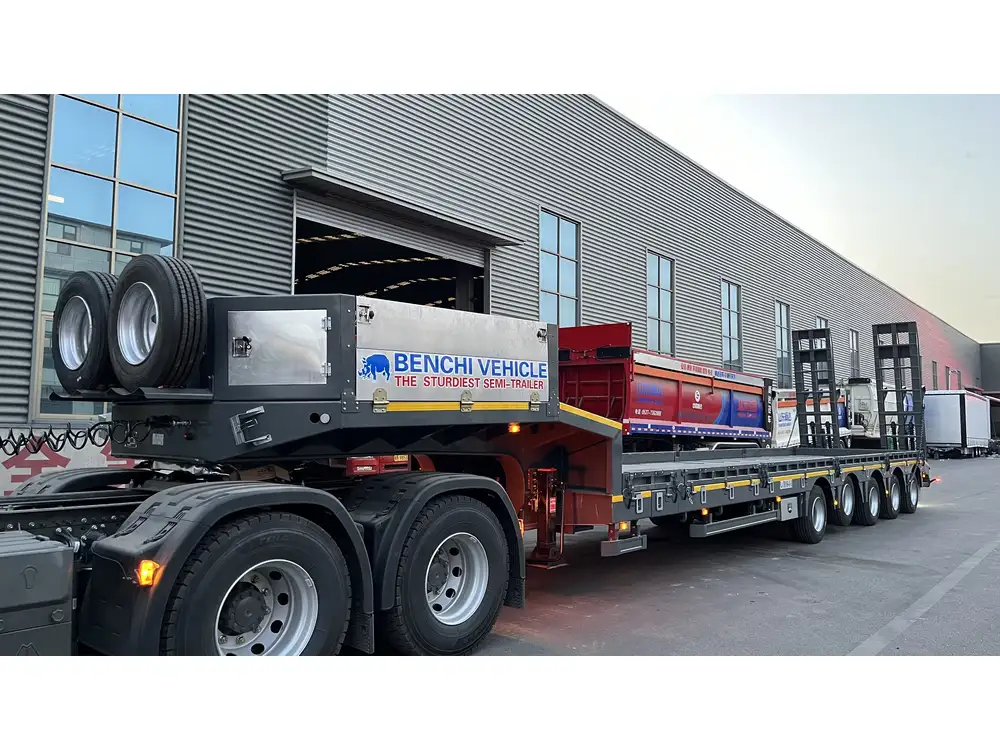Evaluating the capacity of a semi-trailer for transporting cattle is essential for optimizing logistics in the agricultural and transportation sectors. Knowing exactly how many cows can be accommodated in a typical semi-trailer can influence decisions regarding transportation costs, safety, and efficiency. In this article, we will delve into the factors that determine capacity, regulations, and practical considerations for transporting cows via semi-trailer.
Understanding Semi-Trailer Dimensions
Standard Semi-Trailer Size
A standard semi-trailer typically measures about 53 feet in length, 8.5 feet in width, and around 13.5 feet in height. The internal dimensions, however, can slightly differ due to the trailer’s design and type. It’s crucial to consider these specifications when planning how many cows can be loaded:
| Dimension | Measurement |
|---|---|
| Length | 53 feet |
| Width | 8.5 feet |
| Height | 13.5 feet |

Internal Volume Calculation
To calculate the internal volume of a semi-trailer, we multiply length, width, and height:
[ \text{Volume} = \text{Length} \times \text{Width} \times \text{Height} ]Using the dimensions provided:
[ \text{Volume} = 53 \, \text{ft} \times 8.5 \, \text{ft} \times 13.5 \, \text{ft} = 6,038.25 \, \text{ft}^3 ]This massive volume is crucial when determining how many cattle can be loaded, but it’s not just about volume; there are various aspects that come into play.
Factors Affecting Cow Capacity
Animal Size and Weight
Cows vary significantly in size and age, impacting how many can fit in a trailer. An adult cow might weigh anywhere between 1,000 to 1,800 pounds, and their space requirements will differ accordingly. Not all cattle are the same, so understanding the specific type of cattle being transported is essential.
- Adult Cattle: Approximately 2 adult cows can fit comfortably in a standard 53-foot trailer, considering they need enough space to stand and be secure.
- Yearlings: A trailer can accommodate about 4 to 7 yearlings due to their smaller size.
- Calves: If calves are being transported, as many as 10 to 15 could fit, given their smaller dimensions.

Transport Regulations
Legal guidelines differ based on the region and country regarding the transportation of animals:
- Space Requirement: The American Veterinary Medical Association suggests at least 28 square feet of space per adult cow.
- Ventilation Needs: Ensuring proper airflow is crucial for animal welfare during transport. Regulations may vary on the amount of space given to each animal for maintaining adequate ventilation.
- Weight Limits: Each state has specific weight limits for vehicles, and transgressing these limits can result in penalties. Typically, a semi-trailer can handle around 80,000 pounds without violating road regulations.
Calculation Table for Cow Capacity
| Cattle Type | Approx count per trailer | Estimated Weight (avg) | Total Weight |
|---|---|---|---|
| Adult Cows | 2 | 1,200 lbs | 2,400 lbs |
| Yearlings | 4 to 7 | 600 lbs | 2,400-4,200 lbs |
| Calves | 10 to 15 | 300 lbs | 3,000-4,500 lbs |
Practical Considerations for Loading Cattle

Proper Loading Techniques
Loading cattle should be performed with care to minimize stress. Utilize quality loading ramps and ensure that the process is as calm as possible. Factors to consider involve:
- Experience and Training: Handlers should be properly trained in animal behavior to effectively manage loading without inducing stress on the cattle.
- Time Management: Ensure a timely loading process. Cattle are less likely to stress if the loading process is swift and organized.
Safety Measures During Transport
Safety for both the animals and drivers should be prioritized. Key considerations include:
- Non-Slip Flooring: Ensure the semi-trailer has a non-slip flooring system to prevent injuries during transport.
- Division Gates: Use division gates to separate calves or yearlings from adult cattle, allowing for better management of animals during transport.
- Temperature Control: Load cattle during cooler parts of the day to avoid heat stress.
Regular Breaks
It’s essential to plan for regular breaks during long transport to allow cows to rest, hydrate, and feed if necessary. The guidelines may specify breaks every 24 hours. Utilizing these breaks can help maintain animal health and reduce stress.

The Importance of Planning
Assessing Destination Requirements
Before initiating transportation, it is crucial to have a clear understanding of the destination’s requirements. Some questions to consider:
- Are there specific regulations on unloading?
- What facilities are available for properly managing the cattle upon arrival?
- Are there any veterinary checks required upon arrival?
Logistics Optimization
Effective planning can significantly reduce costs and maximize capacity usage. Techniques to enhance transportation logistics include:
- Route Evaluation: Choose routes with minimal traffic congestion and optimal road conditions.
- Schedule Coordination: Coordinate with livestock markets, auction houses, or other receiving points to ensure a timely and efficient delivery.

Cost Considerations
Understanding the economics of cattle transport helps in decision-making:
- Fuel Costs: Since cattle transport can be weighty, fuel efficiency is crucial. Prepare to analyze fuel usage against expected profit margins.
- Driver Compensation: Ensure fair compensation for drivers, as they play a vital role in the transport process.
Conclusion: The Essential Knowledge for Transporting Cows
Determining how many cows fit in a semi-trailer is a multifaceted task that intertwines practical logistics, regulatory compliance, and animal welfare considerations. With careful planning, adequate knowledge of dimensions and weight regulations, and an understanding of cattle needs, we can effectively utilize semi-trailer transport for livestock.
In summary, while the standard capacity may suggest 2 adult cows typically, specific situations will vary widely based on the age and size of the cattle being transported. Fostering best practices throughout the transportation journey ensures not only compliance with regulations but also the health and well-being of the livestock being transported. With this extensive knowledge at hand, manufacturers and transporters can better navigate the complexities of cattle transportation, optimizing their operations and ensuring success in delivering high-quality services.



